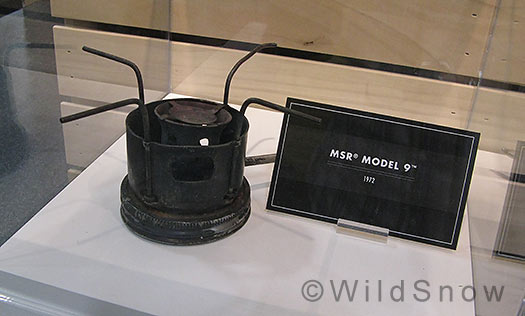Back through my tradeshow notes, more highlights:
Folks always ask “What did you see that was really cool?”. Since we actually don’t qualify as true rehab-ready gear junkies around here (I swear), summer OR doesn’t result in as much addiction fodder as winter, when the ski stuff abounds. Nonetheless, during any season, nothing stimulates our kleptomania like smaller and more functional cameras. In that sense, we are on a quest that remains unfulfilled. But we are closer. The truly new (camera at show was an empty dummy) Pentax Q will probably at least for a while be “the world’s smallest and lightest interchangeable lens camera.” This royal attribute will come at a price that I’ll estimate will stay in the $800 to $1,000 range if you get anything more than the basic kit. More, another price will be performance sacrifice you may make for this camera’s tiny 1/2.3″ digital sensor.
Usually, less digital camera sensor area = less performance in low light. And low light shooting is one of the fun things you can do with digital cameras. So we’ll see exactly how much less when we get to test. But the smaller sensor allows downsizing of everything, so perhaps it is appropriate. Burst mode does 5 frames per second which will be adequate for shotgun style action shooting. Video full 1080p HD. For those of you on the endless quest for starlight or special effects, amazingly (compared to most other digital cameras), the rig has a bulb mode (meaning you can open up the shutter and it’ll stay that way till you choose to close it.) Weight of body without lens is 7 ounces and the lenses are quite small and light, so weight savings with the Q is a given over probably any other interchangeable lens camera and even some fixed lens point-and-shoot type units (though, yes, that 7 ounce weight is _without_ any lens). Deployed flash rises off-camera on a nifty little retractable tower that should result in high quality flash lighting of people shots.
One biggie accessory that’ll be sold for the Q is a clip-on optical viewfinder that’ll work by attaching to the flash hotshoe on top of the camera. Ostensibly, this viewfinder thus locks into the camera’s electronic buss, and will do more than just being static. Cameras without optical viewfinders just plain blow for shooting in bright-light snow environments, so this clip-on viewfinder alone might be the killer feature in comparison to 95% of the other cameras out there.
The “Q” will be worth checking out when it goes retail in a few weeks. Pentax also has some nifty new point-and-shoots, such as the latest (12th generation) GPS enabled and ruggedized Optio WG-1. Indeed, I think the Optio has gotten to the point where we probably need to put one in our stable. Some shopping links for your pleasure:
I stopped by Cascade Designs for a brief chat and was digging their MSR stove history display. Cascade makes the gear under brands such as Therm-a-Rest and MSR. Their NeoAir inflatable All-Season sleeping pad makes less crinkly noise than other models NeoAir models, is rated at R 4.9 and again without internal insulation can be inflated by lung power without worry of internal condensation compromising insulating value. Folks are saying this can be used as a stand-alone for lightweight snow camping. If so, nifty. Shop for it.

One of the first MSR stoves had a tin jar lid for a base. Hundred on the funk scale.
We are thrilled to report that Mystery Ranch will be making their nice albeit heavy Blackjack avalanche airbag backpack more than a pound lighter. The changes are said to mostly be in the plumbing, but a bit in the pack materials. They’ve also made the trigger handle location configurable so it won’t end up too high or low on the shoulder strap. Mysteryranch.com
All for now. “The road goes on forever and the party never ends.”
WildSnow.com publisher emeritus and founder Lou (Louis Dawson) has a 50+ years career in climbing, backcountry skiing and ski mountaineering. He was the first person in history to ski down all 54 Colorado 14,000-foot peaks, has authored numerous books about about backcountry skiing, and has skied from the summit of Denali in Alaska, North America’s highest mountain.
